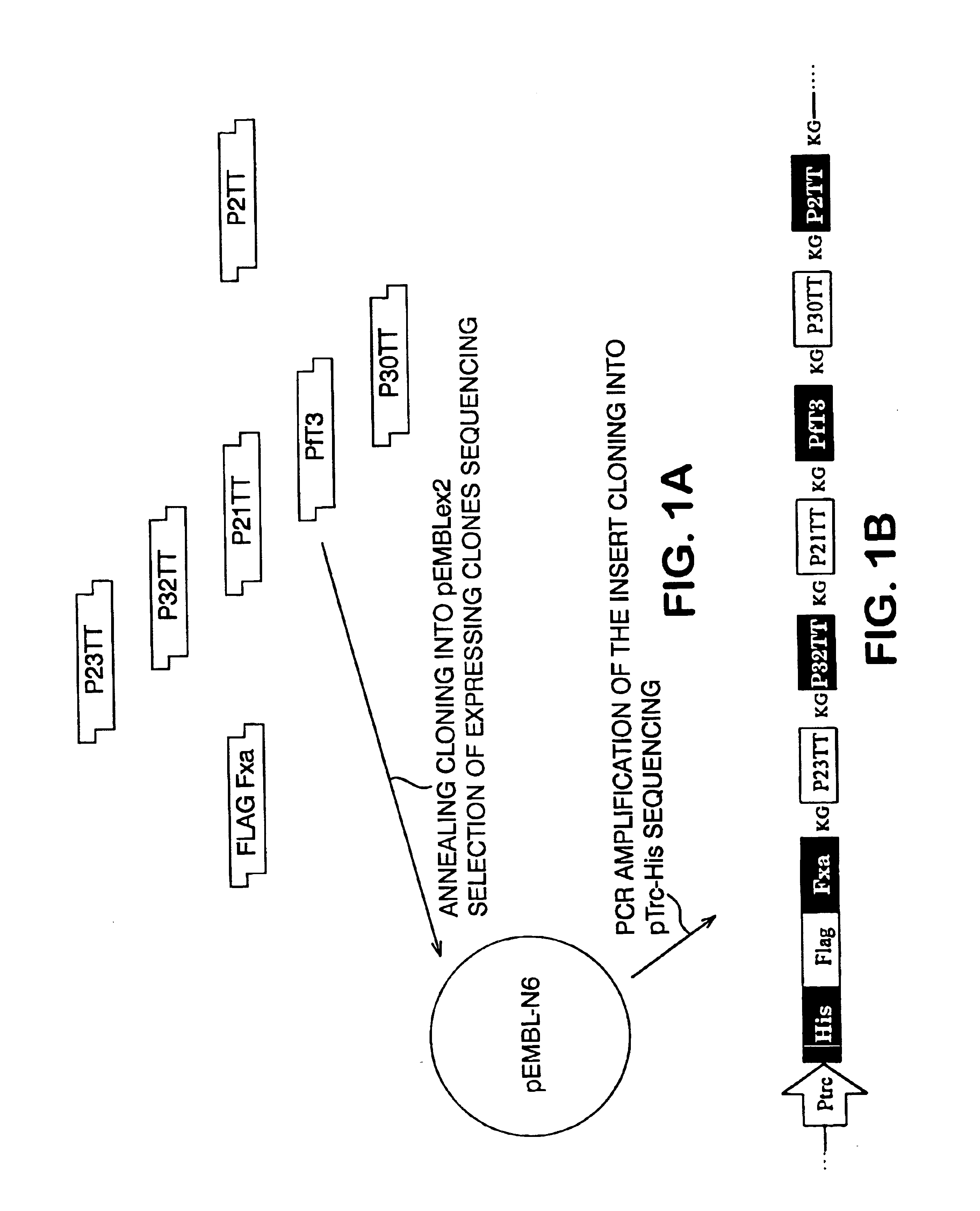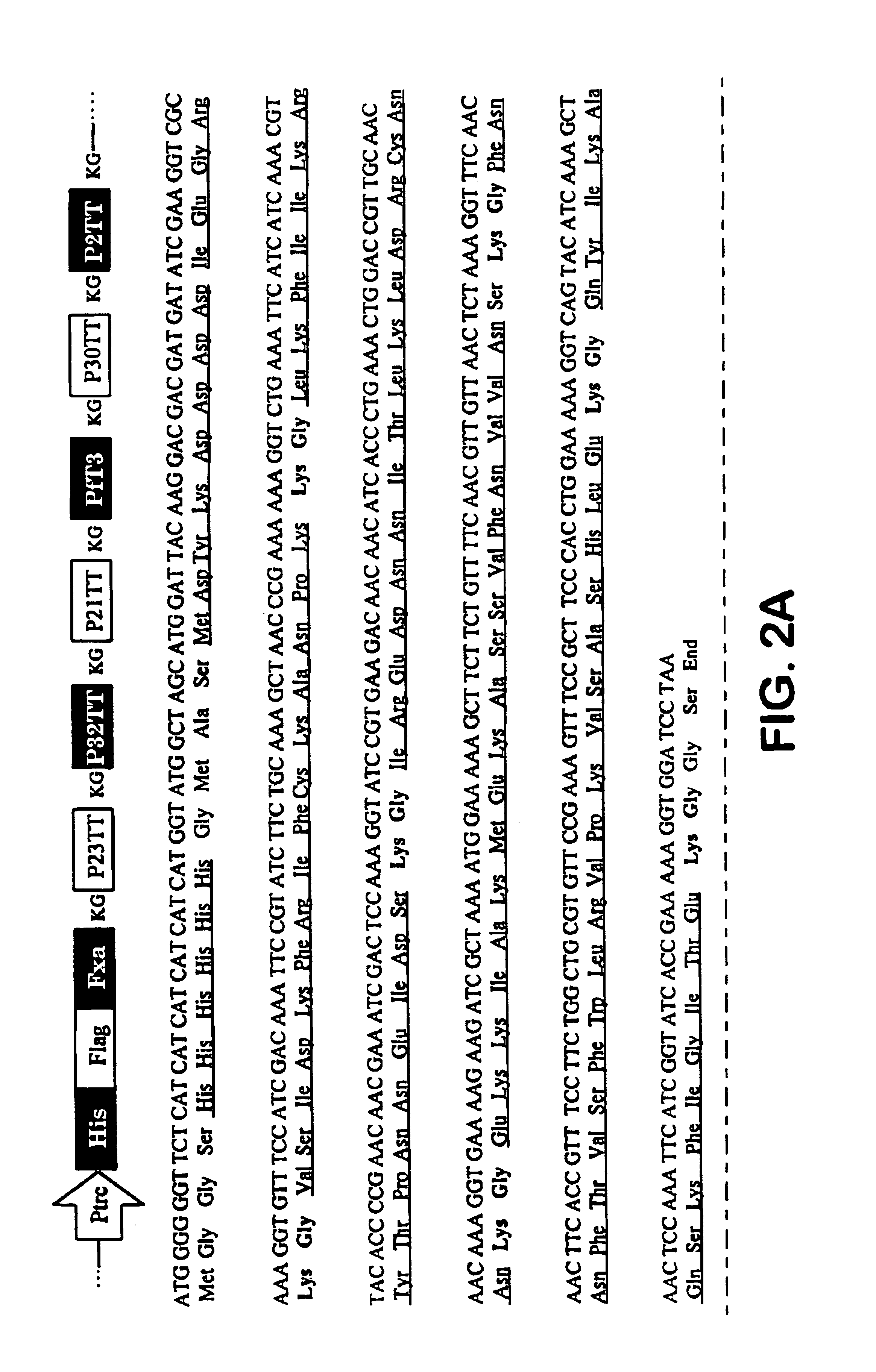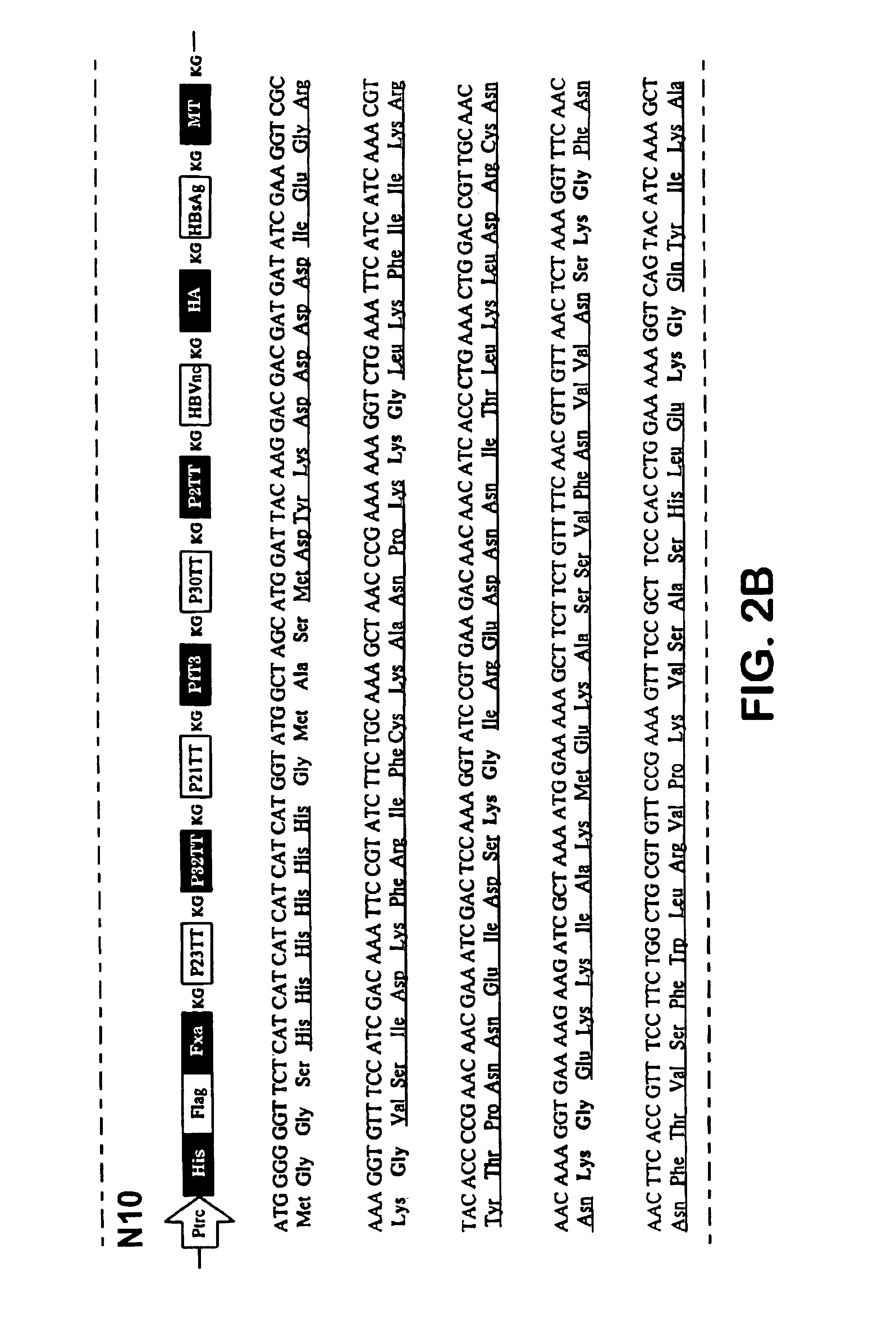Polyepitope carrier protein
a carrier protein and polyepitope technology, applied in the field of polyepitope carrier proteins, can solve the problems of poor immunogenicity, negating the usefulness of these epitopes in the generation of new, and general effectiveness not achieved with this approach, so as to facilitate the subsequent purification of recombinant proteins and precise regulation of carrier protein expression.
- Summary
- Abstract
- Description
- Claims
- Application Information
AI Technical Summary
Benefits of technology
Problems solved by technology
Method used
Image
Examples
Embodiment Construction
MATERIALS AND METHODS
[0137]Summary of standard procedures and techniques
[0138]The practice of the present invention will employ, unless otherwise indicated, conventional techniques of molecular biology, microbiology, recombinant DNA, and immunology, which are within the skill of the art. Such techniques are explained fully in the literature eg. Sambrook Molecular Cloning; A Laboratory Manual, Second Edition (1989); DNA Cloning, Volumes I and ii (D. N Glover ed. 1985); Oligonucleotide Synthesis (M. J. Gait ed, 1984); Nucleic Acid Hybridization (B. D. Hames & S. J. Higgins eds. 1984); Transcription and Translation (B. D. Hames & S. J. Higgins eds. 1984); Animal Cell Culture (R. I. Freshney ed. 1986); Immobilised Cells and Enzymes (IRL Press, 1986); B. Perbal, A Practical Guide to Molecular Cloning (1984); the Methods in Enzymology series (Academic Press, Inc.), especially volumes 154 & 155; Gene Transfer Vectors for Mammalian Cells (J. H. Miller and M. P. Calos eds. 1987, Cold Spring ...
PUM
| Property | Measurement | Unit |
|---|---|---|
| Time | aaaaa | aaaaa |
| Time | aaaaa | aaaaa |
| Fraction | aaaaa | aaaaa |
Abstract
Description
Claims
Application Information
 Login to View More
Login to View More - R&D
- Intellectual Property
- Life Sciences
- Materials
- Tech Scout
- Unparalleled Data Quality
- Higher Quality Content
- 60% Fewer Hallucinations
Browse by: Latest US Patents, China's latest patents, Technical Efficacy Thesaurus, Application Domain, Technology Topic, Popular Technical Reports.
© 2025 PatSnap. All rights reserved.Legal|Privacy policy|Modern Slavery Act Transparency Statement|Sitemap|About US| Contact US: help@patsnap.com



